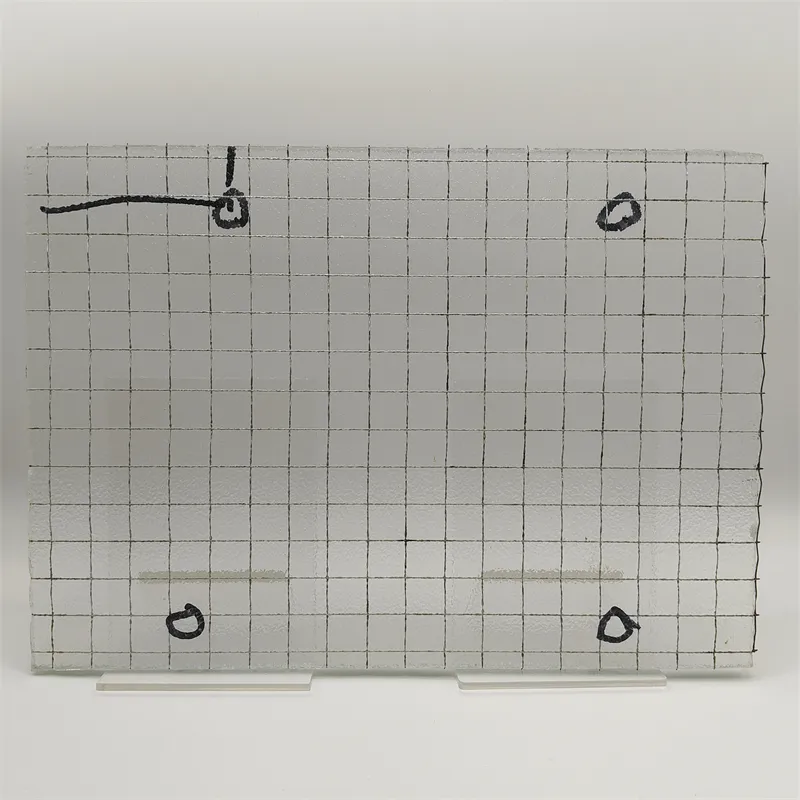Dec . 01, 2024 18:10 Back to list
float glass manufacturing process
The Float Glass Manufacturing Process
Float glass is a type of flat glass that is produced through a unique and efficient manufacturing process. This method not only ensures high-quality glass sheets but also revolutionizes the way glass is produced. The float glass manufacturing process involves several essential steps, including raw material preparation, melting, floating, annealing, and cutting.
1. Raw Material Preparation
The first stage of float glass manufacturing begins with the careful selection and preparation of raw materials. The primary components used in the production of float glass are silica sand, soda ash, and limestone. Additional materials, such as alumina and magnesium oxide, may be added to enhance specific properties of the glass. The raw materials are finely ground and thoroughly mixed to ensure uniformity. This mixture forms the batch, which will undergo melting.
2. Melting
Once the batch is prepared, it is fed into a furnace, where it is subjected to high temperatures ranging from 1,600 to 1,700 degrees Celsius (approximately 2,912 to 3,092 degrees Fahrenheit). In the furnace, the raw materials undergo a chemical transformation, resulting in a molten glass. The melting process is crucial as it determines the glass’s clarity, strength, and overall quality. The use of natural gas or electric power in the furnace contributes to the efficiency and control of the melting process, ensuring a consistent output of molten glass.
3. Floating
float glass manufacturing process

After the raw materials have been transformed into molten glass, the next step is the floating process. The molten glass is carefully poured onto a surface of molten tin in a floating tank. This is where the process gets its name. The glass spreads out and forms a continuous sheet, and due to the different densities of glass and tin, the glass floats on top of the tin, creating a perfectly smooth surface. This floating action is critical in producing glass that has uniform thickness without any surface distortion.
4. Annealing
Once the glass sheet has formed, it must undergo an annealing process. In this stage, the glass is gradually cooled in a controlled environment to relieve internal stresses. This is done in a large annealing lehr, where the glass is moved slowly through different temperature zones. Proper annealing is vital to ensure that the glass retains its strength and transparency, eliminating potential issues like cracking or warping in later stages.
5. Cutting and Finishing
After the annealing process, the glass sheets are ready for cutting and finishing. The cooled glass is transported to cutting tables, where it is measured and cut into the desired sizes. Additional processes, such as edge finishing, coating, or laminating, may also be performed depending on the intended use of the glass. This stage allows manufacturers to customize glass products for various applications, from windows and doors to mirrors and glass facades.
Conclusion
The float glass manufacturing process is a remarkable combination of chemistry, physics, and engineering, resulting in high-quality glass products that meet diverse industrial demands. By carefully controlling each stage of production, manufacturers can ensure optimal properties in the final product, making float glass a preferred choice in architectural, automotive, and various other applications. As technology advances, the float glass process continues to evolve, incorporating more sustainable practices and innovations to meet the needs of a dynamic market.
-
Safety and Style with Premium Laminated Glass Solutions
NewsJun.24,2025
-
Reinvents Security with Premium Wired Glass
NewsJun.24,2025
-
Premium Float Glass Line for Modern Architecture
NewsJun.24,2025
-
Low Emissivity Glass for Energy-Efficient Architecture
NewsJun.24,2025
-
High-Performance Insulated Glass Solutions for Modern Architecture
NewsJun.24,2025
-
Elevates Interior Style with Premium Silver Mirror
NewsJun.24,2025
Related PRODUCTS














